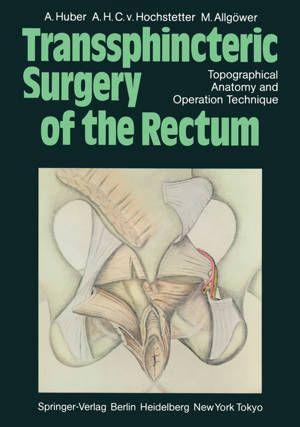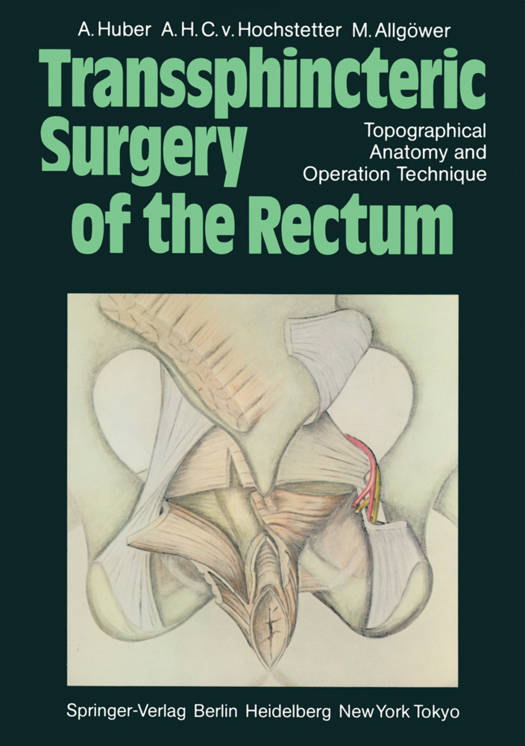
- Afhalen na 1 uur in een winkel met voorraad
- Gratis thuislevering in België vanaf € 30
- Ruim aanbod met 7 miljoen producten
- Afhalen na 1 uur in een winkel met voorraad
- Gratis thuislevering in België vanaf € 30
- Ruim aanbod met 7 miljoen producten
Zoeken
Transsphincteric Surgery of the Rectum
Topographical Anatomy and Operation Technique
A Huber, A H C V Hochstetter, M Allgöwer
Paperback | Engels
€ 100,98
+ 201 punten
Omschrijving
More than a century ago, Cripps successfully employed the direct and complete division of the anal sphincters as a means of approaching the lower rectum and anal canal, and reported on a series of 36 patients who had been treated in that fashion. Cripps was pleasantly surprised to find good fecal continence in over two-thirds of the patients during later follow-ups, despite the fact that the divided sphincters had not been repaired. The transsphincteric procedure was largely forgotten in subsequent years, however, and only the parasacral proctotomy of Kraske, which spared the anal sphincters, can be said to have gained an established place in the" surgical armamentarium. " It remained for York Mason to redirect the attention of the surgical community to the great potential of the trans- sphincteric approach and the excellent continence that can be achieved through adequate repair of the divided sphincters. Having recognized the outstanding practical value of this procedure, we felt it necessary to define more precisely the anatomical prerequisites that would ensure minimum operative bleeding, and to bring the procedure more in line with current knowledge of normal continence and defecation. Dr. A. Huber, in consultation with the director of the Institute for Clinical Anatomy of our surgical department, Prof. A. von Hochstetter, did many months of dissection work on fresh anatomic preparations in an effort to explore and refine the various aspects of the trans sphincteric ap- proach.
Specificaties
Betrokkenen
- Auteur(s):
- Vertaler(s):
- Uitgeverij:
Inhoud
- Aantal bladzijden:
- 86
- Taal:
- Engels
Eigenschappen
- Productcode (EAN):
- 9783642694721
- Verschijningsdatum:
- 11/01/2012
- Uitvoering:
- Paperback
- Formaat:
- Trade paperback (VS)
- Afmetingen:
- 210 mm x 279 mm
- Gewicht:
- 244 g

Alleen bij Standaard Boekhandel
+ 201 punten op je klantenkaart van Standaard Boekhandel
Beoordelingen
We publiceren alleen reviews die voldoen aan de voorwaarden voor reviews. Bekijk onze voorwaarden voor reviews.








